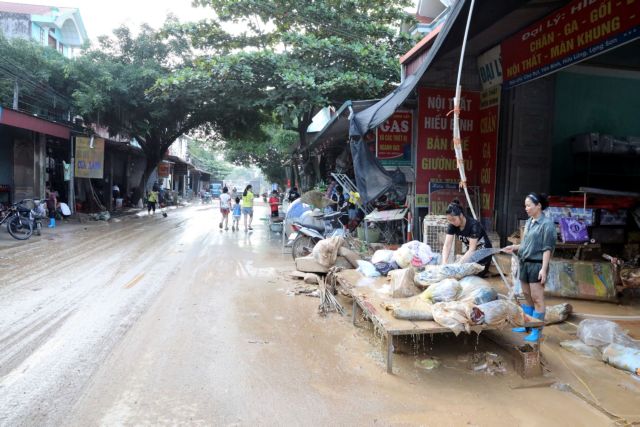 Environment
Environment

 |
| Local residents in Yên Bình Commune, Lạng Sơn Province are cleaning their home following severe flooding hitting Lạng Sơn and many other localities in northern Việt Nam. VNA/VNs Photo Văn Đạt |
HÀ NỘI — Northern Việt Nam is grappling with the aftermath of severe flooding that has left tens of thousands without power and caused billions in damage, even as major national highways and key rail lines reopen.
The Việt Nam Disaster and Dyke Management Authority confirmed that all national highways are now passable, and the Hà Nội – Thái Nguyên railway line resumed service at 6.30pm on Sunday. Yet in Bắc Ninh Province, nearly 29,500 households remain without electricity, a stark reminder of the storm’s lingering impact.
By Monday morning, floodwaters had affected over 12,230 homes across the region — 10,073 in Bắc Ninh and 2,161 in Hà Nội — an increase of 1,273 households compared with the previous day. In Thái Nguyên, power outages disrupted parts of the provincial-to-commune data network, while public communications were fully restored in Trung Giã and Đa Phúc communes.
Across Thái Nguyên, Bắc Ninh, Cao Bằng and Lạng Sơn, a total of 550,805 customers lost electricity, of which 502,636 have been restored, leaving 48,169 households still in the dark. Authorities are monitoring 59 dyke-related incidents and continuing emergency response efforts.
Preliminary estimates put total damage at over VNĐ8.72 trillion ($367.5 million), with the heaviest losses in Thái Nguyên (VNĐ4 trillion), followed by Cao Bằng (VNĐ2 trillion), Bắc Ninh (VNĐ1.67 trillion) and Lạng Sơn (VNĐ1.05 trillion). Local officials continue assessing the destruction and coordinating recovery.
By 5pm Sunday, the Central Relief Board under the Vietnam Fatherland Front (VFF) Central Committee had received more than VNĐ922 billion ($39.1 million) in donations for recovery from Typhoons Bualoi and Matmo (Typhoons No 10 and 11), with around VNĐ470 billion already allocated. On the same day, the Prime Minister approved an additional VNĐ400 billion in aid, distributed to Thái Nguyên (VNĐ250 billion), Cao Bằng (VNĐ50 billion), Lạng Sơn (VNĐ50 billion) and Bắc Ninh (VNĐ50 billion).
Meanwhile, central provinces including Đắk Lắk and Lâm Đồng are facing continued heavy rainfall, heightening risks of flash floods, landslides and soil erosion. Accumulated rainfall ranges from 10–20mm, with some areas exceeding 50mm, affecting numerous communes.
Authorities have issued warnings for flash floods, landslides and ground subsidence, emphasising threats to life, transport disruption and damage to homes and businesses. Meteorological agencies urged local authorities to inspect vulnerable areas, including blocked waterways and unstable terrain, and take preventive measures to reduce the risk of further disaster. VNA/VNS




.jpg)